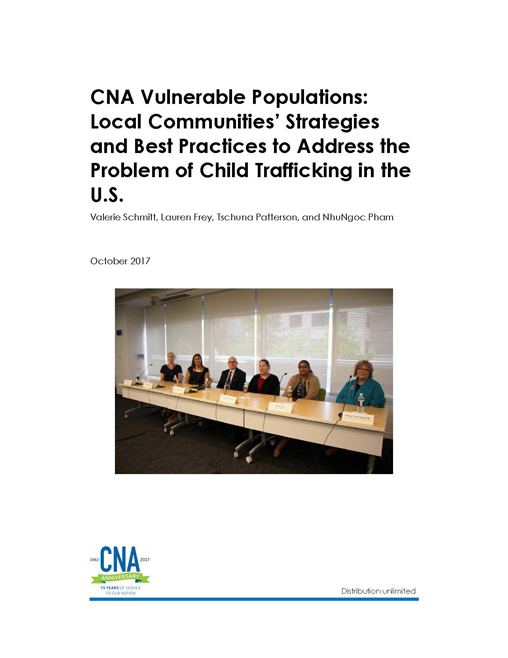Child trafficking is a serious criminal justice and public health issue facing communities today. Child trafficking has an indelible effect on victims and survivors, their families and loved ones, and communities at large. To combat child trafficking, communities across the United States have fostered collaborative partnerships to implement innovative strategies for identifying and assisting trafficked children and bringing traffickers to justice.
What is child trafficking?
Under federal law, child labor trafficking is defined as “the recruitment, harboring, transportation, provision, or obtaining of a person for labor or services through the use of force, fraud, or coercion for the purpose of subjection to involuntary servitude, peonage, debt bondage or slavery.” A person under the age of 18 induced to perform a commercial sex act is a victim of child sex trafficking, regardless of the use of force, fraud, or coercion. Child sex trafficking is sometimes discussed under the broader umbrella term commercial sexual exploitation of children (CSEC), which involves a broader range of commercial sexual abuse crimes, such as child pornography and child sex tourism.
Children have been trafficked in agricultural labor settings, through the commercial sex industry, and in traveling sales crews, among other settings. Children who are already facing adversity or have been marginalized in society, such as runaway youth or children in foster care, are at particular risk for trafficking. The National Center for Missing and Exploited Children estimates that one in six runaways reported to their hotline were likely sex trafficking victims, and one in five runaways served by Covenant House, a national network of runaway youth providers, were identified as labor or sex trafficking victims.
What is being done about child trafficking?
Since the passage of the Trafficking Victims Protection Act (TVPA) in 2000, law enforcement agencies across the country have made significant advances in identifying child trafficking situations, bringing traffickers to justice, and emancipating child trafficking victims. Agencies have trained their workforce and developed specialized response protocols and policies regarding child trafficking and exploitation. Federal, state, and local governments have allocated resources and funding, enhanced intelligence-based policing to improve data and law enforcement interventions, and successfully investigated child sex and labor cases. Law enforcement agencies have gained greater insights into the networks and operational models that allow trafficking to go undetected and have participated in large-scale community education and youth prevention initiatives.
Download reportDistribution unlimited
Details
- Pages: 48
- Document Number: CIM-2017-U-016314-Final
- Publication Date: 10/1/2017
